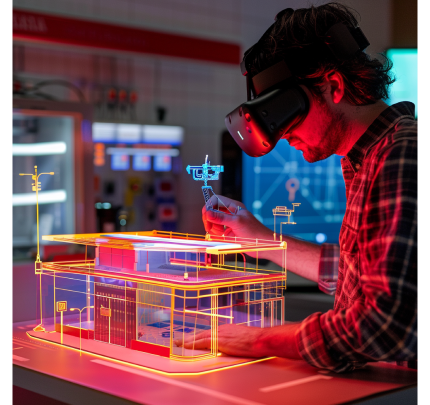
Digital Twins
Enhancing Efficiency, Compliance, and Customer Experience
Executive Summary
Petrol stations are critical nodes in the fuel supply chain, serving millions of vehicles daily. Efficient operation and maintenance of petrol stations are vital to ensure uninterrupted service, customer satisfaction, and compliance with safety and environmental regulations. However, the traditional approach to managing petrol stations involves several challenges.
Implementing a digital twin for petrol stations transforms traditional management approaches by leveraging real-time data and advanced analytics. This innovative solution significantly enhances operational efficiency, compliance, safety, and customer satisfaction. By adopting digital twin technology, petrol station operators can proactively manage their stations, optimise operations, and provide superior service, ultimately leading to increased profitability and competitive advantage.
This digital twin project is for Tanik Petroleum, a downstream Oil & Gas company in Lagos, Nigeria. The key objectives include providing real-time operational insights, enabling predictive maintenance, ensuring compliance with safety standards, and improving customer satisfaction through seamless transactions and personalised services.
Mood board
Going for a fusion of the past, present and future in sleek, cool, and sharp metallic tones.
Art Direction
The visuals should evoke a sense of trust, reliability, and forward-thinking innovation.

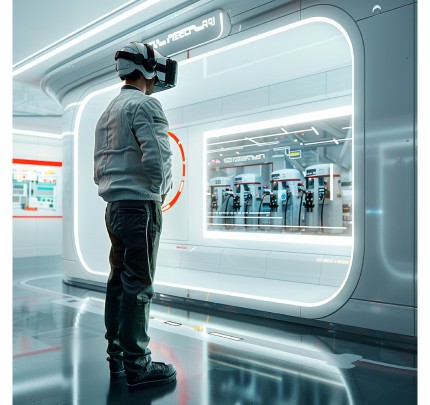
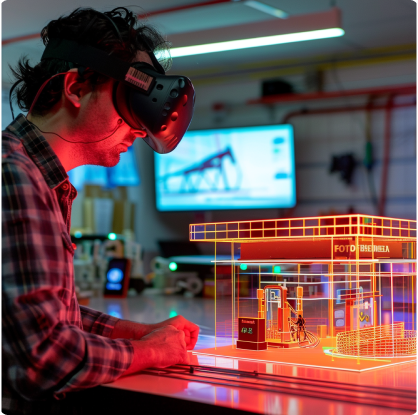
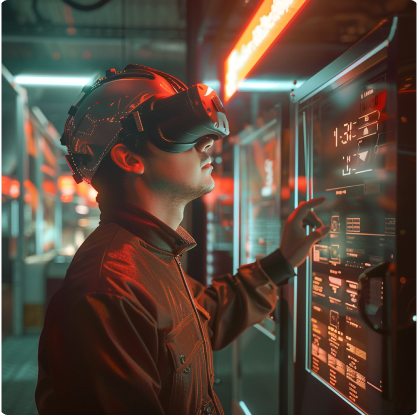
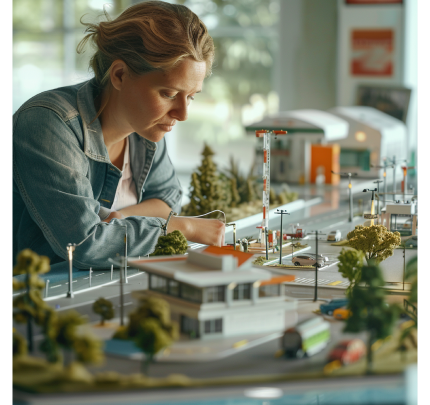

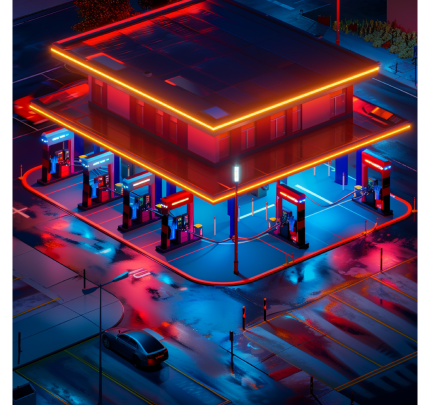
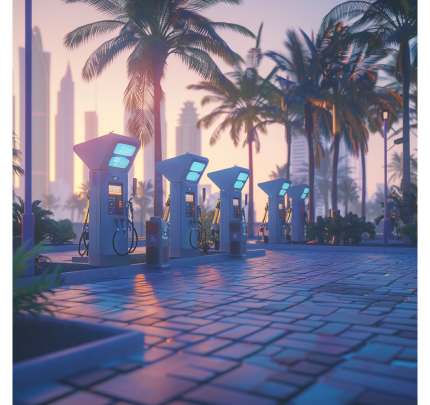
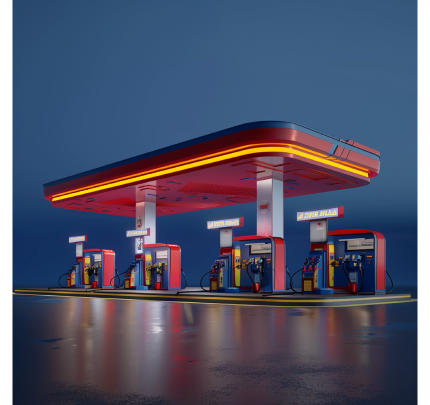
Objectives
Having clear goals helps deliver the project.
Desire:
- Contextualise real-world data in a virtual environment.
- Monitor real-time data from petrol station pumps.
- Simulate maintenance schedules, fuel levels, and other key metrics.
- Provide visual and interactive insights into the operation of the petrol station.
Collect Real-World Data:
- Data from petrol pumps including fuel dispensed, flow rates, pressure, temperature, payment system status, energy consumption, service schedules, and compliance metrics.
- Real-time sensors and IoT devices to feed data into the system.
Design the Virtual Model:
- Create a 3D model of the petrol station.
Develop the Digital Twin:
- Use Unity for the 3D simulation and visualization.
- Implement data reading, processing, and display logic.
World Building
A quick sketch to oil the wheels.
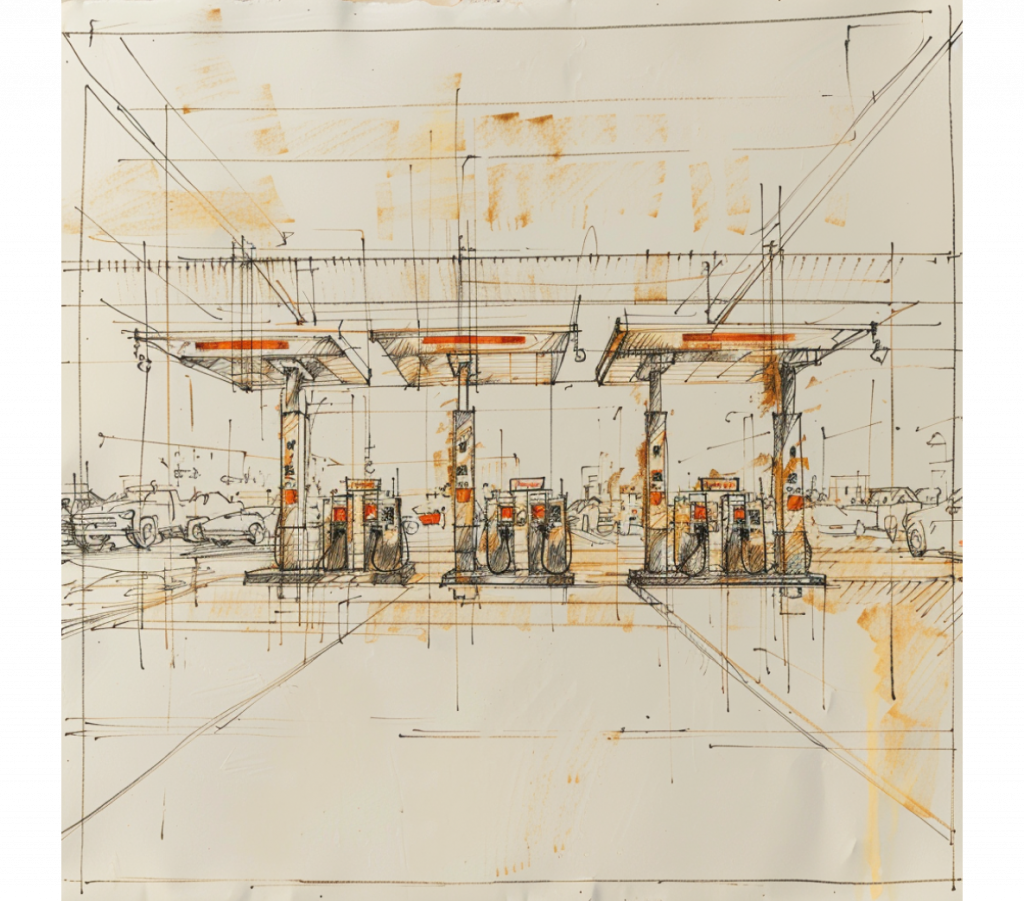
Building the environment for a Petrol Station digital twin involves envisioning a future where technology and sustainability converge to create efficient, reliable, and customer-centric fuel service experiences.
By integrating real-time data, predictive analytics, and smart technologies, these petrol stations not only meet current demands but also pave the way for future innovations and enhancements. This vision balances operational efficiency with environmental responsibility, setting a new standard for the industry.

Construction
Bringing the idea to life.
Key Components:
- Smart Petrol Station: Sleek, modern architectural designs with sustainable materials, automated fuel dispensers, integrated payment systems, Sensors and IoT Devices.
- Centralised Control Hub: A control room equipped with the digital twin and digital dashboards displaying real-time data from all petrol pumps/stations.
Environment

Skybox
A digital twin feels at home in a modern city with skyscrapers and clear skies

Layout
To stay in theme, we will incorporate lush green vegetation, roads and signs for direction

Assets
Created some assets for the station and signs for easy navigation.
Scripting
It was written..
We will use telemetry panels to display data on our digital twin. To display data using telemetry panels in Unity, we’ll create two scripts: one for managing the data (Data Script) and another for reading and displaying this data from a JSON file (ReadJSON Script)
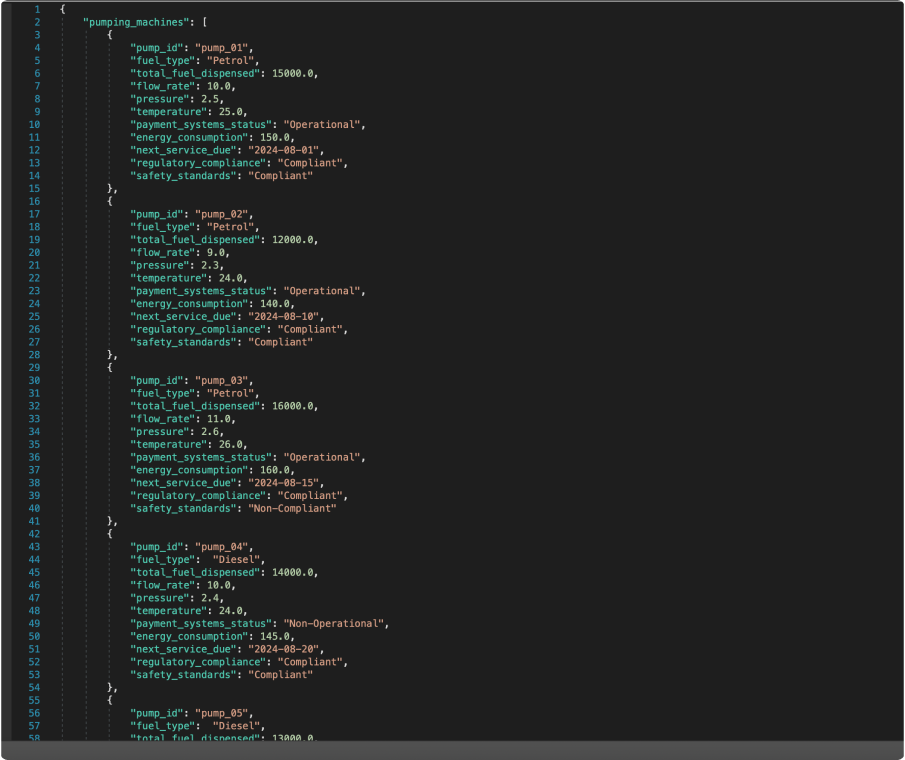
Data Script
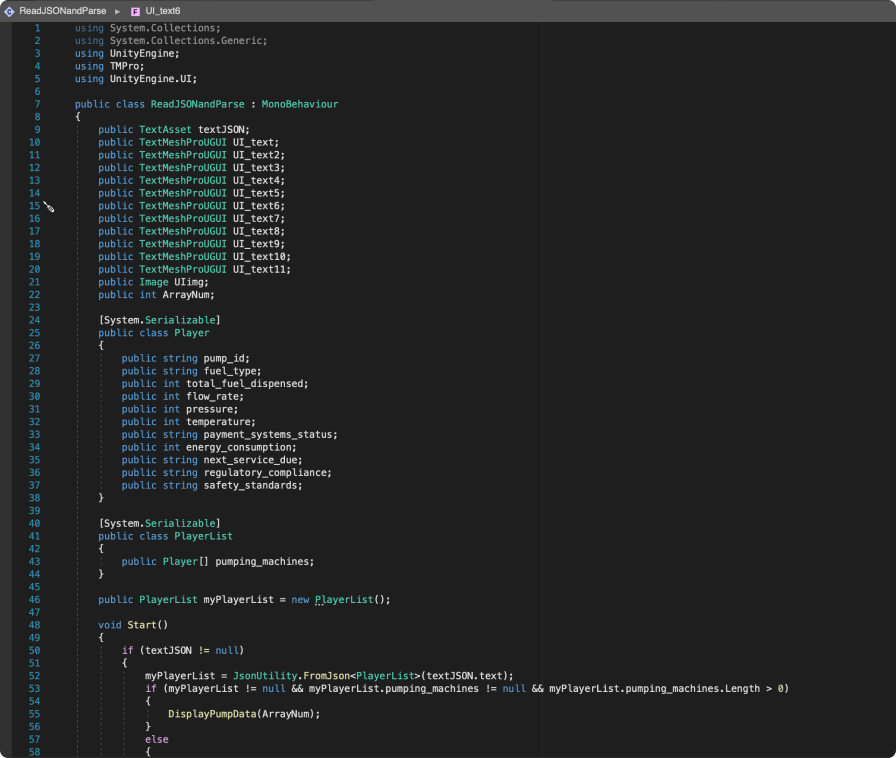
ReadJSON script
This script reads the data and updates the Unity UI components to display the information. We’ll also handle the display logic here.
I have written commands to setTextColor to handle the color change logic, making the code cleaner and more maintainable. The output data will change from white to red if there is non-compliance, a machine is non-operational or offline.
I have also written debug logs to help identify if there’s an issue with the data or indexing.
Implementation
Turning water to.. oil?
After creating the digital twin, we placed it on a table in the office. Assigned each respective panel to the corresponding fuel pump.
As seen in the video above, the flat look for the panels did not make for easy viewing, so i slanted it at a 45 degree angle. Now it is clear to see.
Insert vehicles
Because.. what is a fuel station without haulage tankers to deliver and cars that consume hydrocarbons?!
Further Development
We can create a comprehensive digital twin solution that not only monitors and manages petrol stations but also optimizes the entire downstream operation of an oil company, resulting in increased efficiency, cost savings, and improved decision-making.
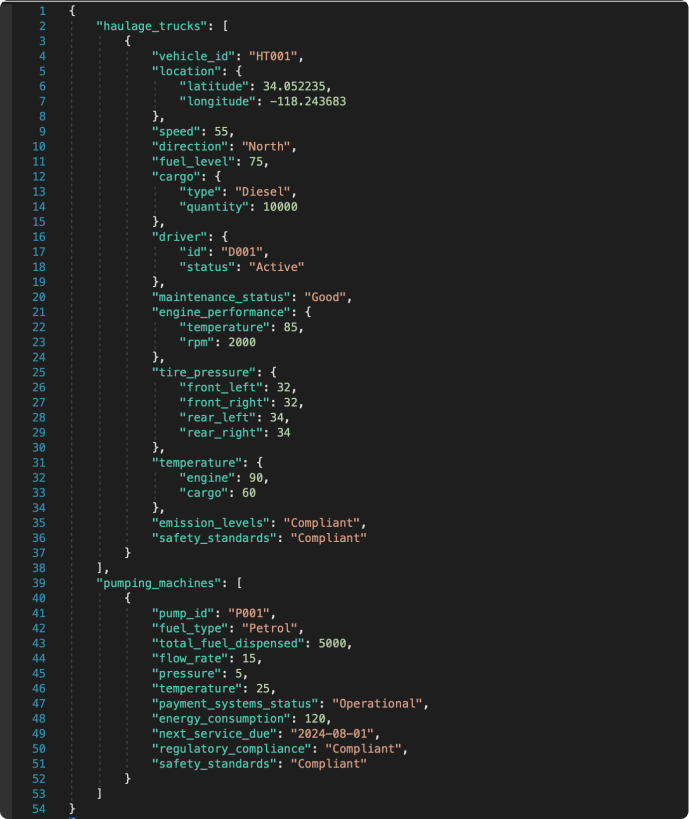
An example of an expanded data model in JSON. This shows how we can class the data for haulage tankers.
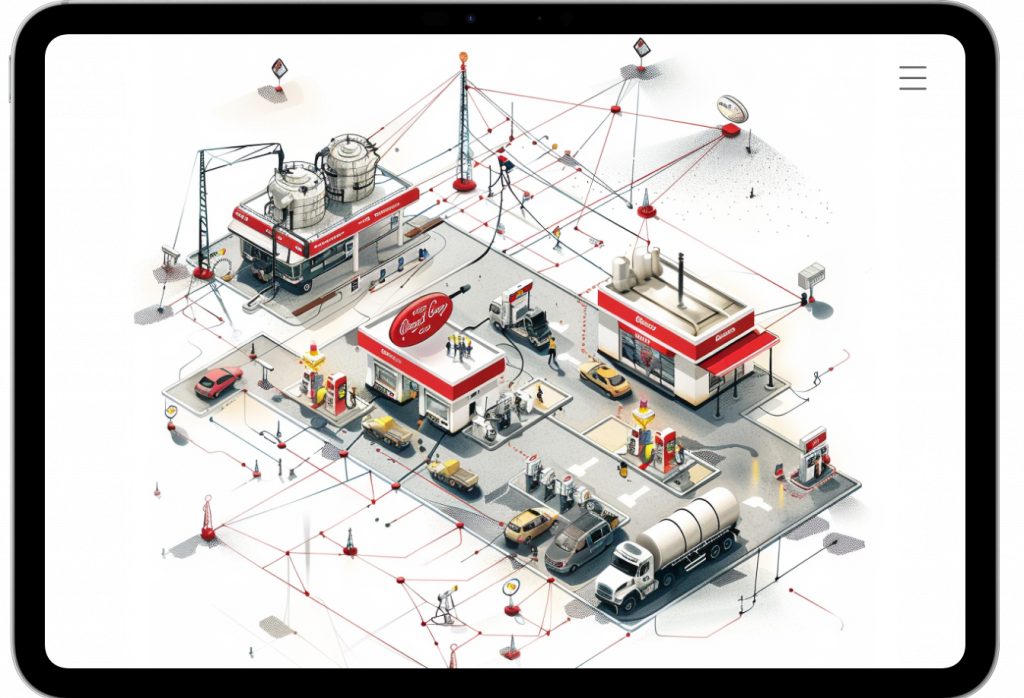
iPad interface showing the network of the downstream operation.
For the ultimate user experience, we will develop a mobile application with customisable views for on-the-go access to the digital twin data and monitoring tools. For data Integration and visualisation we can create a comprehensive dashboard that aggregates data from all parts of the downstream operation, and Implement alerts for anomalies, like maintenance issues, non-compliance, or route deviations.
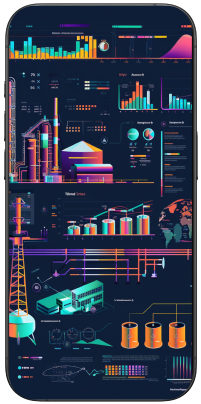
iPhone interface showing data, digital models and analytics
We can implement real-time tracking and monitoring using GPs tracking and IoT sensors, whilst collecting telemetry data from tankers to a centralised system for analysis. With advanced analytics and AI we can use machine learning algorithms to predict maintenance needs for tankers based on telemetry data, and offer route and supply chain optimisation.

PC interface showing charts, graphs and controls on the dashboard
ERP and CRM Integration for a seamless data flow and better business decision-making through financial modelling to understand and predict costs, revenue, and profitability across the downstream operation. We will implement real-time tracking and monitoring using GPs tracking and IoT sensors, whilst collecting telemetry data from tankers to a centralised system for analysis. With advanced analytics and AI we will use machine learning algorithms to predict maintenance needs for tankers based on telemetry data, and offer route and supply chain optimisation. ERP and CRM Integration for a seamless data flow and better business decision-making through financial modelling to understand and predict costs, revenue, and profitability across the downstream operation.
Summary
By continuously evolving and expanding the digital twin ecosystem, we can create a robust and comprehensive digital infrastructure that drives efficiency, sustainability, and profitability in the oil and gas industry. This technology not only addresses current challenges but also paves the way for future innovations in digital transformation.
